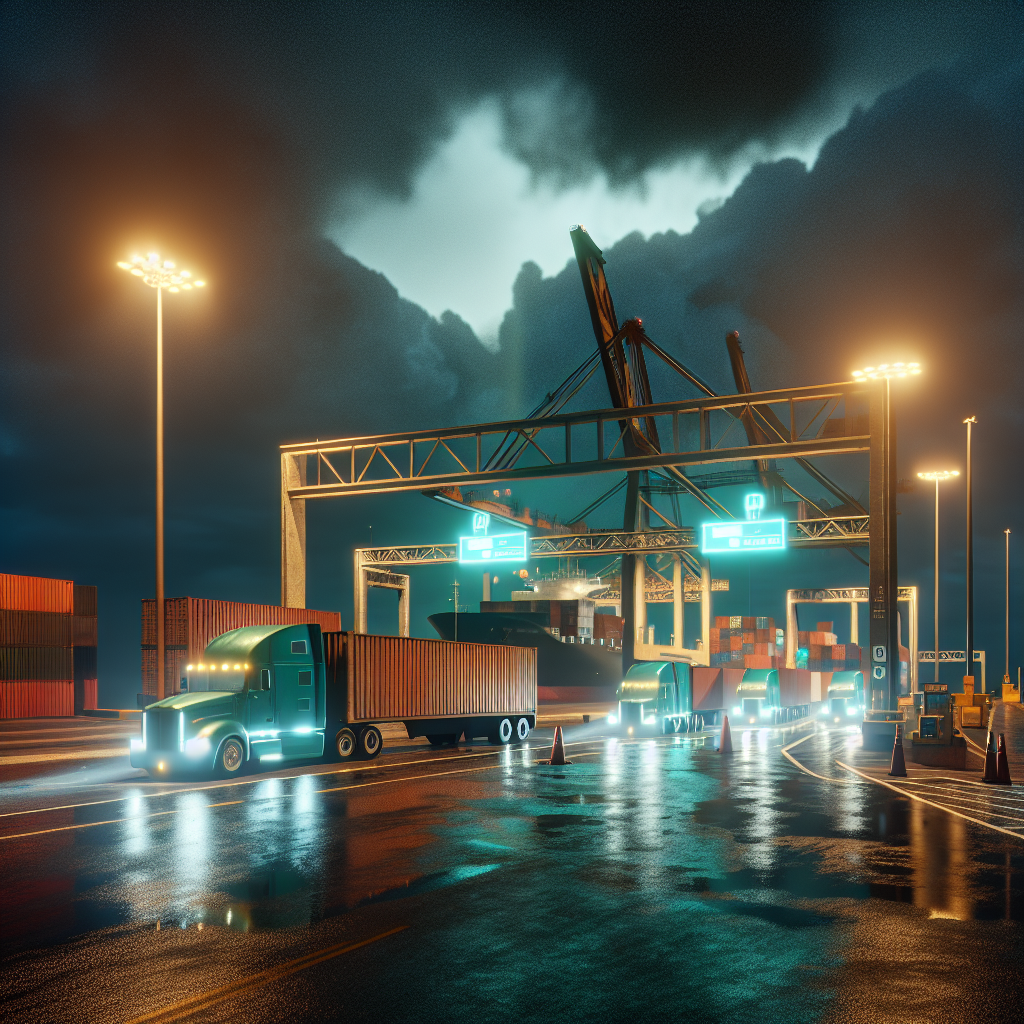With Washington’s new port charges on China-linked ships set to start on October 14, Chinese state carriers executed an unexpected play: rather than tack on new surcharges or change rotations, COSCO and OOCL told customers they would hold the line on pricing and service. That stance coincided with a sharp slide in trans-Pacific spot rates this week, a double-digit drop that resets cost baselines for U.S. importers just days before the fees kick in.
The policy backdrop is moving just as quickly. The United States plans to begin collecting the phased fees on October 14, with payments processed through the Treasury’s Pay.gov portal. Analysts estimate the program could add roughly $3.2 billion in costs for the top container lines, with COSCO the most exposed. Carriers have been reworking fleets to blunt the impact, and some non-Chinese operators have already redeployed ships to avoid the charges.
Spot pricing reflects the scramble. Industry benchmarks show another leg down this week: Freightos reports eastbound Asia–U.S. West Coast rates fell 16% to $1,554 per FEU and Asia–U.S. East Coast rates slid 18% to $3,260. Drewry’s composite World Container Index also ticked lower, down 2% to about $1,685 per FEU, underscoring how soft demand and added capacity are overpowering pre-fee uncertainty.
For U.S. trucking and drayage, the timing matters. September containerized imports were already cooling—down 8.4% year over year—with inbound boxes from China off nearly 23%. As ocean spot prices compress further and carriers shuffle deployments, port communities should brace for uneven gate flows through October and a softer baseline for Q4 volumes, particularly on lanes tied to China-origin goods. Expect more day-to-day variability in appointment availability and fewer chassis pinch points than during peak, but also a higher risk of last-minute blank sailings that can strand drivers and equipment.
The Chinese carriers’ decision to absorb costs, at least for now, adds a twist for competitors and cargo owners. If COSCO and OOCL keep rates steady while non-Chinese lines re-route or trim capacity to limit fee exposure, inland routings could skew toward services that still call key U.S. gateways on schedule. That favors drayage providers positioned near major West and Gulf Coast ports with flexible driver pools and chassis access. Conversely, if redeployments by other lines consolidate calls into fewer ports, longer-haul transloads and intermodal handoffs may rise—even as total boxes decline.
What to watch next week: whether the fee’s launch triggers any late, carrier-specific service tweaks; how much of today’s spot-rate decline sticks once the policy goes live; and whether Chinese imports stabilize after the Golden Week lull. Trucking dispatchers should keep close tabs on terminal advisories and steamship EDI for blankings and berth windows, tighten appointment lead times on Asian import turns, and coordinate early with BCOs on transload vs. intact moves to avoid deadhead and yard dwell as schedules shift.
Sources: FreightWaves, Reuters, Freightos, Container News, IndexBox
This article was prepared exclusively for TruckStopInsider.com. Republishing is permitted only with proper credit and a link back to the original source.




